Last week we had the pleasure of welcoming professors Edwin Pos and Yann Hautier of Utrecht University to our project in Costa Rica. It was a week entirely dedicated to local collaborations. Our project managers Maarten and Hanneke together with the professors visited different organizations in Costa Rica to strengthen existing collaborations and initiate new ones.. (more…)
Do you want to offset your CO2? But have no idea how CO2 offsetting works? In this article we will tell you all the ins and outs about CO2 compensation so that you can reduce your CO2 emissions and offset them in the right way.
(more…)
When a butterfly flies by, most people do stop for a moment to follow it with their eyes. They often have beautiful colors and the large soft wings compared to the small body make them look almost cuddly. In Costa Rica there are more than 1200 species of butterflies and of course we are very curious about the species that occur in the reservation of Adopt Rainforest.
(more…)
Written by: volunteer Claire Doisy from France
If you are about to stay at Adopt Rainforest in Costa Rica, you will definitely meet one of the project’s key people: Gerald. This smiling young man whose age no one really knows, will help you find your way in the jungle forest and will teach you how to use a machete. He knows just everything about trees and insects and if you’re lucky enough to be Dutch, he can even hold a conversation with you in your native language. Gerald is a discreet person who has made himself indispensable: in the garden, or in the jungle he always finds his way.
(more…)
Stichting Adopteer Regenwoud’s research project is entering an exciting new phase thanks to a long-term collaborati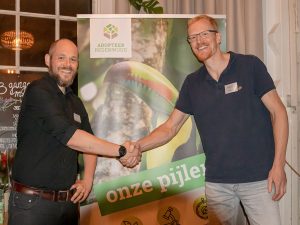 on with Utrecht University. The foundation was ready for a new step to professionalize the research project and Utrecht University was looking for a stable and reliable partner in Central America to conduct solid research in the rainforest. So for both parties this is a wonderful collaboration! Because of this we will make a big step in professionalizing our current research on biodiversity in our reserve. Together with the visiting students we will focus on scientific research in which the diversity and development of nature in our reserve, with an emphasis on flora, is central.
on with Utrecht University. The foundation was ready for a new step to professionalize the research project and Utrecht University was looking for a stable and reliable partner in Central America to conduct solid research in the rainforest. So for both parties this is a wonderful collaboration! Because of this we will make a big step in professionalizing our current research on biodiversity in our reserve. Together with the visiting students we will focus on scientific research in which the diversity and development of nature in our reserve, with an emphasis on flora, is central.
(more…)
Is it possible to restore the original rainforest in a deforested area where cows have been grazing for years? In Costa Rica at least they accept the challenge. This article tells in short how a Dutch foundation in Costa Rica is trying to transform degraded land back into a fully fledged rainforest. (more…)
Despite the fact that there are no students because of the Corona crisis, the research continues (partly).
In the Netherlands, some students are busy analysing data, but also in Costa Rica inventories are still being made. Accompanied by guide Tapa, Hanneke and Maarten walk the transects in different habitats.
(more…)
What’s with the fur? Why do sloths sleep so much? This month, the three-fingered sloth is the animal of the month at Adopt Rainforest. And what’s more fun than hearing from one of the founders of Adopt Rainforest some fun facts that you won’t find in a standard biology book. Maarten van der Beek is one of the biologists at Adopt Rainforest and lives on the Work With Nature reserve in Costa Rica. (more…)
Did you know… in the wet months the frogs in Costa Rica show themselves more often? They are less prone to drying out because of the wetness and are singing because many species lay their eggs in the rainy season. Earlier we talked about the glass frogs, but there are many more frogs to be seen in this period. (more…)
Most species are between 7.5 and 13 cm in size. You would almost think it is an out-sized bumblebee! Hummingbirds (Trochilidae) are the smallest birds in the world. They are a family of birds of the order swift-like. The family includes more than 300 species. Most species are found in South America. It is so much fun (more…)
Now that student Sonny, a pure night tour specialist, is about to finish his internship, a lot of great discoveries are made at the last minute. To top it all off, last week we found a special glass frog in the reserve. This Hyalinobatrachium dianae – Diane’s Bare-hearted Glass Frog was only discovered and described […]
Critically endangered parrot species Yesterday the research program of Adopt Rainforest participated in the Censo Internacional de la Guacamaya Verde 2022. Or in English the International Sensus of the Great Green Macaw. Throughout its distribution, dozens of organisations participate in the next days to get an understanding of the current state of this parrot species. […]
Last summer we were able to open the proverbial champagne bottle again! Despite all external influences, we managed to formalize the purchase of a beautiful and especially strategically important piece of rainforest! It concerns the 9 hectares on which the research center is located. (more…)
The Ceiba tree, also called kapok tree, is an impressive sight with its trunk full of thorns and a growth rate of 2 to 4 meters per year. Those thorns allow the tree to protect itself from all kinds of animals. The tree is one of the forest giants of the tropical rainforest and grows […]
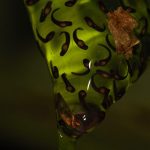
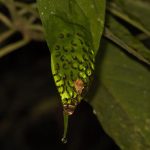
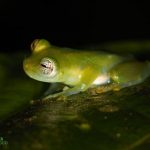
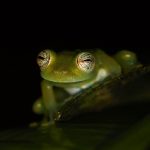
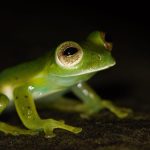
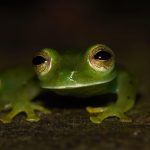
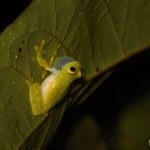
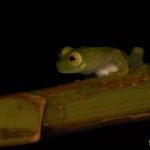
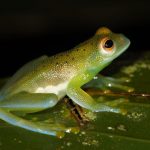
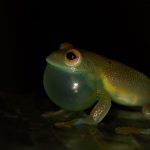
 on with Utrecht University. The foundation was ready for a new step to professionalize the research project and Utrecht University was looking for a stable and reliable partner in Central America to conduct solid research in the rainforest. So for both parties this is a wonderful collaboration! Because of this we will make a big step in professionalizing our current research on biodiversity in our reserve. Together with the visiting students we will focus on scientific research in which the diversity and development of nature in our reserve, with an emphasis on flora, is central.
on with Utrecht University. The foundation was ready for a new step to professionalize the research project and Utrecht University was looking for a stable and reliable partner in Central America to conduct solid research in the rainforest. So for both parties this is a wonderful collaboration! Because of this we will make a big step in professionalizing our current research on biodiversity in our reserve. Together with the visiting students we will focus on scientific research in which the diversity and development of nature in our reserve, with an emphasis on flora, is central.